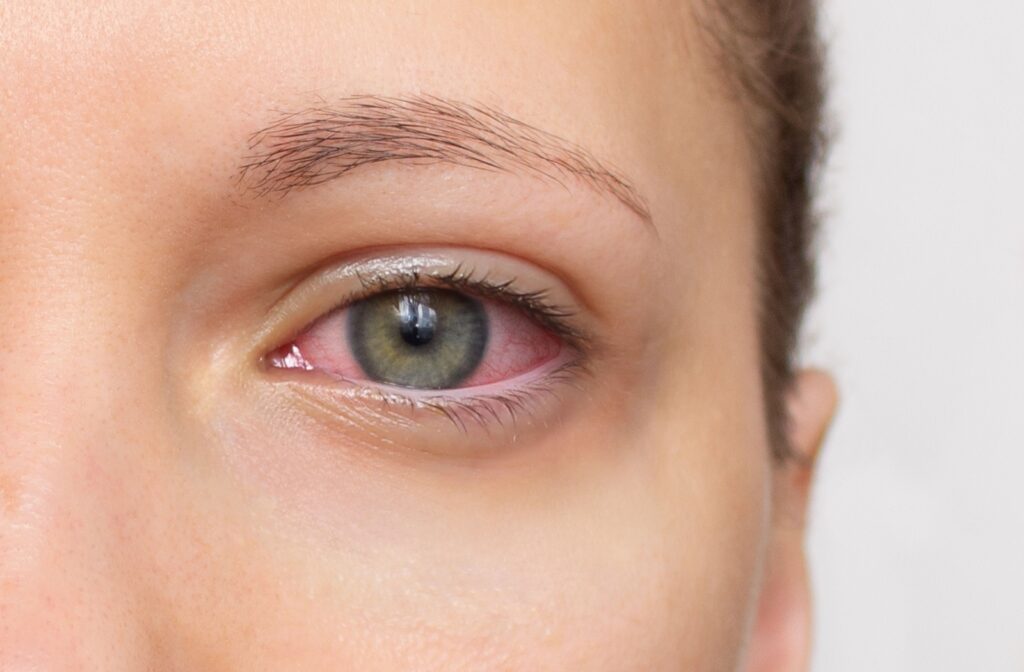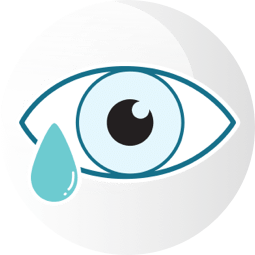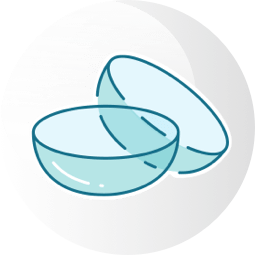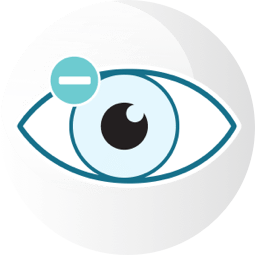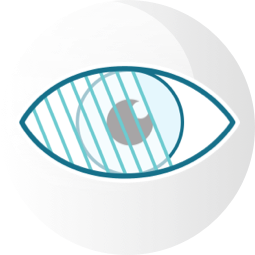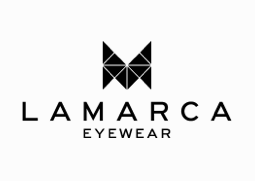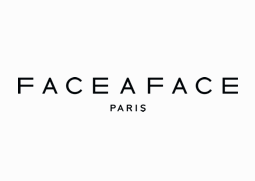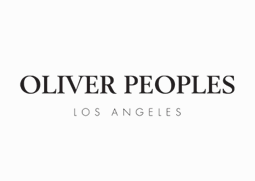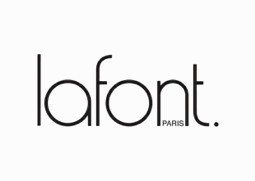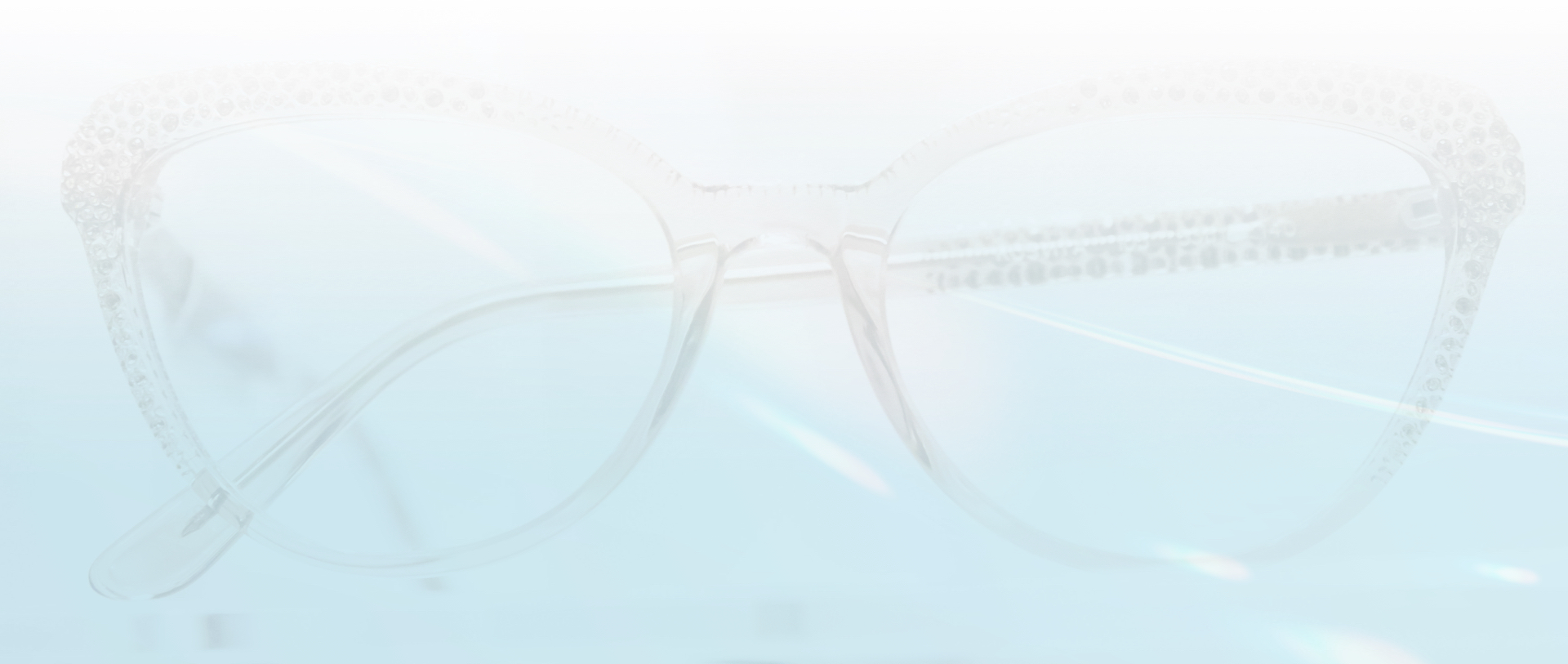Living with dry eyes can feel like a constant battle. From gritty, burning sensations to blurred vision and excess tearing, dry eye symptoms can disrupt your daily life and affect your overall well-being.
Thankfully, a new light-based treatment is offering targeted relief for patients looking for more than just temporary solutions. OptiLight treats dry eyes by using gentle pulses of light to reduce inflammation and restore the natural function of your tear-producing glands.
What Is OptiLight & How Does It Work?
OptiLight is an FDA-approved treatment that uses intense pulsed light (IPL) therapy to manage the root causes of dry eye, especially for those with meibomian gland dysfunction (MGD)—a leading contributor to dry eye disease. Rather than simply easing symptoms, OptiLight helps reduce inflammation, improve meibomian gland function, and promote healthier tear production.
Using a handheld device, your optometrist applies precise pulses of light around the eyes. These light pulses target inflamed blood vessels and liquefy thickened oils blocking the meibomian glands, allowing them to work properly again. This process helps to restore the balance of your tear film—an essential component in keeping your eyes moist, protected, and comfortable.
Who Can Benefit from OptiLight?
OptiLight is designed for individuals with mild to moderate dry eye, particularly those experiencing symptoms due to MGD. If you spend hours looking at screens, live in a dry or windy environment, or are simply aging, you may be more prone to dry eyes. Hormonal changes and certain medications can also contribute to symptoms.
You may be a candidate for OptiLight if you frequently deal with:
- Gritty or sandy sensations
- Burning or stinging eyes
- Redness or watery eyes
- Blurred vision
- Difficulty wearing contact lenses
- Stringy mucus around your eyes
A comprehensive eye exam can help confirm if your symptoms stem from MGD and whether OptiLight is a suitable option for your care plan.
Benefits of OptiLight Treatment
One of the biggest advantages of OptiLight is that it targets the cause of dry eye rather than just managing surface-level discomfort. That means longer-lasting relief with consistent care. Here are some of the key benefits:
- Noninvasive & quick: Each session takes about 15 minutes with no downtime afterward.
- Comfortable treatment: Most patients describe a warm, flickering sensation on the skin.
- Proven results: Backed by several clinical studies, OptiLight is a trusted option in dry eye therapy.
- Aesthetic side benefits: IPL can also reduce redness and improve skin texture around the eyes.
- Cumulative improvements: Many people see noticeable results after just a few sessions, with continued benefits over time.
This technology fits easily into a busy lifestyle, allowing patients to resume daily activities right after treatment.
What Happens During an OptiLight Appointment?
Before starting, your optometrist will complete a full evaluation of your eye health, including checking for conditions that may make IPL treatment unsuitable (like certain skin disorders or active acne). If OptiLight is the right choice, your provider will create a personalized plan based on your symptoms and goals.
On the Day of your Appointment
- Your skin will be gently cleansed, and you’ll be given protective eye shields.
- The doctor will apply a cooling gel before delivering the light pulses around your eyes.
- Each session lasts about 10–15 minutes.
- You might notice slight redness or warmth in the treated area afterward, but these effects are temporary.
Most treatment plans involve four sessions spaced two to four weeks apart. Some patients may require maintenance treatments to keep symptoms under control long-term.
What Is the Difference Between OptiLight & Other Treatments?
Traditional dry eye treatments—like artificial tears, warm compresses, or medicated drops—can offer short-term comfort but often don’t address the root issue. OptiLight is different because it treats inflammation and gland dysfunction directly.
That said, many eye doctors recommend combining OptiLight with other therapies (like prescription eye drops or eyelid hygiene routines) for a more comprehensive approach. Think of OptiLight as a foundation for long-term relief, with other treatments supporting your ongoing comfort.
Additional Skin Benefits with OptiPLUS
While dry eye relief is the main focus, OptiLight has its roots in the world of aesthetic dermatology. The same IPL technology that targets inflammation in your meibomian glands also promotes clearer, smoother skin.
For those looking to take skin rejuvenation a step further, OptiPLUS is a radiofrequency treatment often paired with OptiLight. It uses dual-frequency energy to target deep skin layers, promoting collagen production and firming the skin—great for reducing fine lines and boosting circulation.
Together, OptiLight and OptiPLUS offer a dual approach to comfort and confidence: relief from dry eye symptoms and a refreshed, more youthful appearance around the eyes.
Is OptiLight Right for You?
OptiLight isn’t for everyone, but it’s a game-changer for many people living with chronic dry eye. If you’ve tried lubricating drops, warm compresses, or prescription medications with limited success, this technology may be the next step in your dry eye journey.
It’s important to work closely with your optometrist to determine if IPL therapy is the right choice based on your symptoms, medical history, and skin type. The treatment is safe, effective, and tailored to your needs—so you can get back to seeing (and feeling) clearly.
Ready to Take the Next Step?
At McCauley Celin Eyecare Associates, we’re proud to offer advanced dry eye care, including OptiLight by Lumenis, at our Wexford location. Our experienced team is here to guide you through your options and help build a personalized treatment plan designed for lasting relief and healthier eyes.
Schedule your dry eye consultation today and discover whether OptiLight is the right solution for you.


